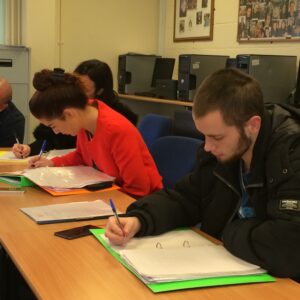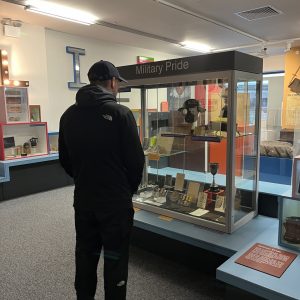

The Itsup2U programme is aimed at ex-offenders who want to give something back to their community as well as better themselves and turn their negative past into a positive future. The CELLS Project are passionate about supporting ex-offenders through rehabilitation and reintegration. The Itsup2U programme sets realistic and achievable goals for individuals to help avoid re-offending through training and personal development support plans, but as we say; “itsup2U”.
Relying on the lived experience and testimonies from ex-offenders, children and young people are mentored by those who are relatable and, therefore more likely to engage with.
“When I came out of prison I found myself stuck in a negative cycle, low self-esteem, and saw myself as not worthy of having a job” (Participant A).
Social rejection towards ex-offenders has impacted how they view themselves as “not worthy” (Participant A). However, through our itsup2u programme, ex-offenders are provided with the training, skills and work experience to turn their negative past into a positive future and inspire young children involved with or at risk of criminal behaviour. Itsup2U is a key programme which lays the foundations for The CELLS Project’s ethos, understanding that people can change and learn from their mistakes and that crime prevention education delivered by relatable individuals who have lived experience can create an impact and positive change on young, vulnerable and at-risk children.
“CELLS has helped me to stop reoffending, it has helped me overcome certain demons in my life regarding mental health issues that I’ve had. I find that helping young people is in essence my counselling. I come away and feel so much better [after mentoring and workshops], it is a worthwhile job, not only as the ex-offender to keep [me] out of prison but also to give something back to the community and put something in place to the damage [I] have caused…” (Participant A).
Seven pathways to reducing re-offending:
1: Accommodation and Support.
A third of prisoners do not have settled accommodation prior to custody and it is estimated that stable accommodation can reduce the likelihood of re-offending by more than a fifth. It also provides the vital building blocks for a range of other support services and gaining employment.
2: Education, Training and Employment.
Having a job can reduce the risk of re-offending by between a third and a half. There is a strong correlation between offending, poor literacy, language and numeracy skills and low achievement. Many offenders have a poor experience of education and no experience of stable employment.
3: Mental and Physical Health.
Offenders are disproportionately more likely to suffer from mental and physical health problems than the general population and also have high rates of alcohol misuse. Not surprisingly, 31% of adult prisoners were found to have emotional well being issues linked to their offending behaviour.
4: Drugs and Alcohol support services.
Around two thirds of prisoners use illegal drugs in the year before imprisonment and intoxication by alcohol is linked to 30% of sexual offences, 33% of burglaries, 50% of street crime and about half of all violent crimes.
5: Finances, Benefits and Debt support.
Ensuring that ex-offenders have sufficient lawfully obtained money to live on is vital to their rehabilitation. Around 48% of prisoners report a history of debt, which gets worse for about a third of them during custody and about 81% of offenders claim benefit on release.
6: Secure family and friend unit.
Maintaining strong relationships with families and children can play a major role in helping prisoners to make and sustain changes that help them to avoid re-offending. This is difficult because custody places added strains on family relationships.
7: Positive mental attitude and behaviour changes.
Prisoners are more likely to have negative social attitudes and poor self-control. Successfully addressing their attitudes, thinking and behaviour during custody may reduce re-offending by up to 14%.
— What The CELLS Project has achieved through the itsup2U programme:
CELLS has supported 95 ex-offenders into employment 16 have started their own business.
169 ex-offenders have gained qualifications.
235 ex-offenders have access to training.
263 ex-offenders have gained work experience.
174 ex-offenders have gained employability skills.
— Crime Awareness days and workshops:
The crime awareness days that CELLS run are delivered by rehabilitated ex-offenders and victims of crime through hour-long sessions within schools across Merseyside, discussing different aspects of crime such as;
- Gangs, guns and knife crime awareness.
- The reality of Prison Life.
- Joint Enterprise.
- Child exploitation and county lines.
- Family perspectives and victim impact.
- Controlling and exploitative relationships.
- Drugs and Alcohol awareness.
- Anti-Social Behaviour.
Delivering crime awareness days from fully trained and rehabilitated ex-offenders and/or through victim perspective is an essential service that we provide. We believe that through sharing lived experience as a tool …

